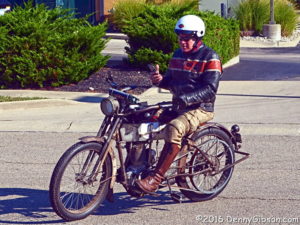 It was just over a week ago, on the tenth, that ninety old motorcycles pulled out of Atlantic City, New Jersey, and set off for Carlsbad, California. Yesterday, most of them pulled into Dodge City, Kansas, where the riders get a day of rest before continuing west on Monday. This is the 2016 version of the Motorcycle Cannonball and these motorcycles are not just old; They’re very old. And that, of course, is one of the reasons only most of them made it to Dodge City. The newest of the entries was built in 1916 and stuff happens when hundred year old machines are called on to perform mile after mile and day after day. The photo is of event leader Dean Bordigioni on his 1914 Harley Davidson. I’m fairly certain that Dean is not using his cell phone to see if he needs to bring home milk. My guess is that he’s making use of its GPS function or possibly just checking the time. The modern technology that keeps riders safe and on course can seem like it’s from a very different world than the technology propelling them.
It was just over a week ago, on the tenth, that ninety old motorcycles pulled out of Atlantic City, New Jersey, and set off for Carlsbad, California. Yesterday, most of them pulled into Dodge City, Kansas, where the riders get a day of rest before continuing west on Monday. This is the 2016 version of the Motorcycle Cannonball and these motorcycles are not just old; They’re very old. And that, of course, is one of the reasons only most of them made it to Dodge City. The newest of the entries was built in 1916 and stuff happens when hundred year old machines are called on to perform mile after mile and day after day. The photo is of event leader Dean Bordigioni on his 1914 Harley Davidson. I’m fairly certain that Dean is not using his cell phone to see if he needs to bring home milk. My guess is that he’s making use of its GPS function or possibly just checking the time. The modern technology that keeps riders safe and on course can seem like it’s from a very different world than the technology propelling them.
The first Motorcycle Cannonball took place in 2010 and I was a spectator as participants approached and departed their overnight stop in Chattanooga, Tennessee. My journal for that outing is here. The competition has been held every two years since then but I completely missed both 2012 and 2014. This year the route passed through Ohio with a lunch stop at Powder Keg Harley-Davidson just a few miles from my home. That’s where all photos in this post were taken.
 Bordigioni wasn’t the first rider to reach the lunch stop. He was just the first to reach it after I did. I had missed the arrival of Jeff Tiernan. That’s his 1913 Henderson in the picture with Bordigioni’s Harley behind it. The Cannonball is not a race. It is an endurance run with points awarded based on miles traveled. The motorcycles are divided into three classes with lower classed motorcycles ranked higher than others that have covered the same distance. Bordigioni started and ended Tuesday in first place by virtue of being the only Class I (single cylinder, single speed) entry to cover every mile. Tieman started the day tied (I believe) for fourth and end the day tied (I believe) for third.
Bordigioni wasn’t the first rider to reach the lunch stop. He was just the first to reach it after I did. I had missed the arrival of Jeff Tiernan. That’s his 1913 Henderson in the picture with Bordigioni’s Harley behind it. The Cannonball is not a race. It is an endurance run with points awarded based on miles traveled. The motorcycles are divided into three classes with lower classed motorcycles ranked higher than others that have covered the same distance. Bordigioni started and ended Tuesday in first place by virtue of being the only Class I (single cylinder, single speed) entry to cover every mile. Tieman started the day tied (I believe) for fourth and end the day tied (I believe) for third.
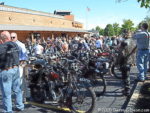
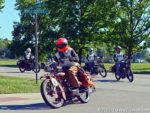
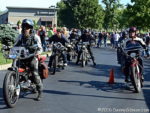 The bulk of participants arrived over the next half hour or so. Most were in small groups of five or six. A few riders took advantage of the stop to make adjustments or small repairs but most headed inside for lunch and a seat that didn’t bounce.
The bulk of participants arrived over the next half hour or so. Most were in small groups of five or six. A few riders took advantage of the stop to make adjustments or small repairs but most headed inside for lunch and a seat that didn’t bounce.
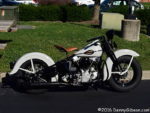
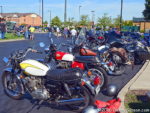
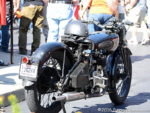 What space the competitors didn’t require was filled to overflowing by other motorcycles. Modern Harley-Davidsons comprised the majority but other brands were represented and many spectators arrived on decidedly non-modern machines. There were plenty of HDs among the older bikes and I’ve included a picture of one along with a Triumph, a BSA, an Indian, and a good looking “snortin'” Norton.
What space the competitors didn’t require was filled to overflowing by other motorcycles. Modern Harley-Davidsons comprised the majority but other brands were represented and many spectators arrived on decidedly non-modern machines. There were plenty of HDs among the older bikes and I’ve included a picture of one along with a Triumph, a BSA, an Indian, and a good looking “snortin'” Norton.
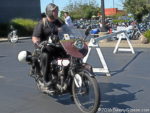
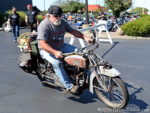
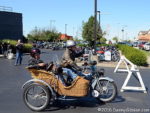 Here are a few more or less random shots of riders returning to the road after their little break. That first one isn’t all that random. Doc Hopkins’ 1916 Harley-Davidson is hooked to the only sidecar in the Cannonball which makes Dawn Hamilton the only passenger. The other photos are of Rick Salisbury on a 1916 Excelsior and Australian Chris Knoop on a 1915 JAP.
Here are a few more or less random shots of riders returning to the road after their little break. That first one isn’t all that random. Doc Hopkins’ 1916 Harley-Davidson is hooked to the only sidecar in the Cannonball which makes Dawn Hamilton the only passenger. The other photos are of Rick Salisbury on a 1916 Excelsior and Australian Chris Knoop on a 1915 JAP.
 Yeah, this photo is out of sequence. It’s not a Cannonball entry and I don’t know who the rider is. It’s a HarleyDavidson but I don’t know its vintage beyond knowing that it is too new to enter this year’s competition even if its owner wanted to. I’m posting it as the day’s last picture because I really agree with the assessment of the guy riding sidecar. Thumbs up Cannonballers and Powder Keg HD. Nicely done.
Yeah, this photo is out of sequence. It’s not a Cannonball entry and I don’t know who the rider is. It’s a HarleyDavidson but I don’t know its vintage beyond knowing that it is too new to enter this year’s competition even if its owner wanted to. I’m posting it as the day’s last picture because I really agree with the assessment of the guy riding sidecar. Thumbs up Cannonballers and Powder Keg HD. Nicely done.
Dean Bordigioni on that 1914 H-D was still leading when what I take to be 72 entries arrived at Dodge City yesterday afternoon. 22 competitors have covered every mile and have perfect scores. Among them are Jeff Tiernan and Doc Hopkins who are mentioned in the article above. Jeff is listed in 4th and Doc’s in 16th. Also mentioned above are Rick Salisbury and Chris Knoop who are currently listed in 53rd and 46th respectively. All the riders appear to be having entirely too much fun, sore butts and all.


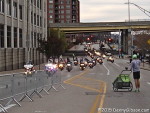
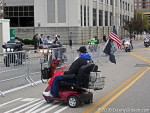


 When I previewed this book in April, it was with the hope that a Kickstarter campaign would result in a bargain priced offset printed version. Ara had turned to the crowd funding site to facilitate pre-ordering the book in support of a cost saving bulk order. As noted in a mid-May update to
When I previewed this book in April, it was with the hope that a Kickstarter campaign would result in a bargain priced offset printed version. Ara had turned to the crowd funding site to facilitate pre-ordering the book in support of a cost saving bulk order. As noted in a mid-May update to 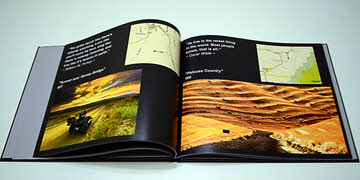 Not surprisingly, many of the photos are of America’s open spaces. Ara has visited and camped in some rather isolated spots and has captured some of their beauty. Canyons, lakes, and improbable shapes carved by wind and water are masterfully recorded and there are many gorgeous sunsets. A quote from Jo Walton really resonated with me:
Not surprisingly, many of the photos are of America’s open spaces. Ara has visited and camped in some rather isolated spots and has captured some of their beauty. Canyons, lakes, and improbable shapes carved by wind and water are masterfully recorded and there are many gorgeous sunsets. A quote from Jo Walton really resonated with me: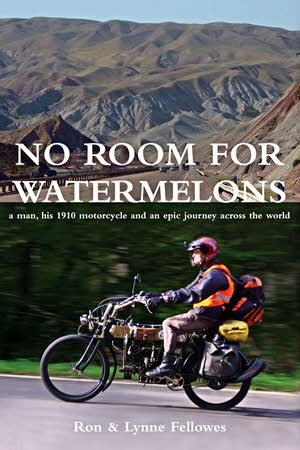 I don’t recall exactly when or even how I first discovered
I don’t recall exactly when or even how I first discovered 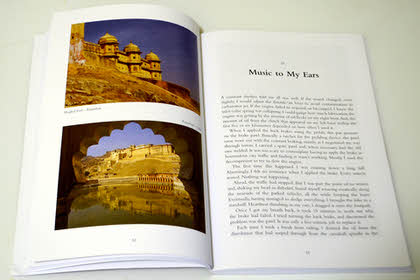 Both paperback and electronic versions of No Room for Watermelons are available through Amazon and I suppose that is the quickest and cheapest way to get a copy of this adventure. On the other hand, if you’d like something a little more personal and meaningful, signed copies can be had directly from the author
Both paperback and electronic versions of No Room for Watermelons are available through Amazon and I suppose that is the quickest and cheapest way to get a copy of this adventure. On the other hand, if you’d like something a little more personal and meaningful, signed copies can be had directly from the author 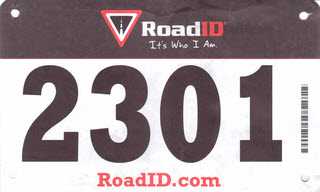 I have now participated in every one of the Cincinnati
I have now participated in every one of the Cincinnati 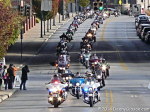

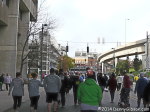

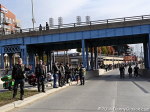
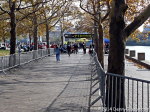
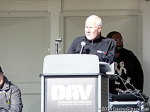
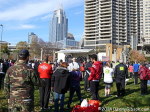
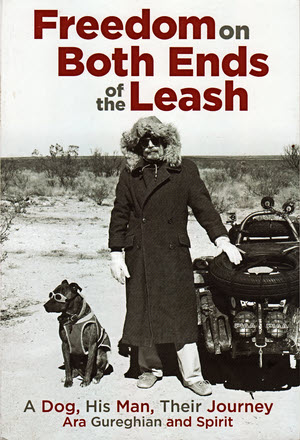 I really looked forward to the publication of this book. I certainly enjoyed reading it and expect to enjoy reviewing it once I get started but reviewing a book that is near impossible to describe isn’t all that easy. Saying it is the story of a man and dog traveling around the US on a motorcycle isn’t wrong but it sure is incomplete. The man, Ara Gureghian, and the dog, Spirit, have been traveling around the US on a motorcycle since November of 2006 with no plans to stop. I’ve followed their blog since April, 2007, and I have no plans to stop, either. When they started their journey, they were not leaving a home where they planned to someday return. They did acquire some land fairly early on and they do spend winters there but even it is more of a base camp than what most would call a home. From the beginning, Ara had called his online journal The Oasis of My Soul and the ten acres of Texas that his mother bought for him instantly became known as The Oasis. One definition of oasis is “something that provides refuge, relief, or pleasant contrast” and that is something both man and dog needed. Ara had suffered the painful loss of his son and Spirit has suffered abuse from a previous owner. Almost everything — the riding, the writing, the sunrises, the stars, the sunsets — is therapy to some degree but the writing is particularly therapeutic. Ara wrote, and continues to write, his journal for himself. He writes about his travels, his surroundings, and his thoughts. This book is something of a “Reader’s Digest” version of the journal. Neither book nor journal actually tries to be a travel guide or provide insights into living. Nonetheless, they do both.
I really looked forward to the publication of this book. I certainly enjoyed reading it and expect to enjoy reviewing it once I get started but reviewing a book that is near impossible to describe isn’t all that easy. Saying it is the story of a man and dog traveling around the US on a motorcycle isn’t wrong but it sure is incomplete. The man, Ara Gureghian, and the dog, Spirit, have been traveling around the US on a motorcycle since November of 2006 with no plans to stop. I’ve followed their blog since April, 2007, and I have no plans to stop, either. When they started their journey, they were not leaving a home where they planned to someday return. They did acquire some land fairly early on and they do spend winters there but even it is more of a base camp than what most would call a home. From the beginning, Ara had called his online journal The Oasis of My Soul and the ten acres of Texas that his mother bought for him instantly became known as The Oasis. One definition of oasis is “something that provides refuge, relief, or pleasant contrast” and that is something both man and dog needed. Ara had suffered the painful loss of his son and Spirit has suffered abuse from a previous owner. Almost everything — the riding, the writing, the sunrises, the stars, the sunsets — is therapy to some degree but the writing is particularly therapeutic. Ara wrote, and continues to write, his journal for himself. He writes about his travels, his surroundings, and his thoughts. This book is something of a “Reader’s Digest” version of the journal. Neither book nor journal actually tries to be a travel guide or provide insights into living. Nonetheless, they do both.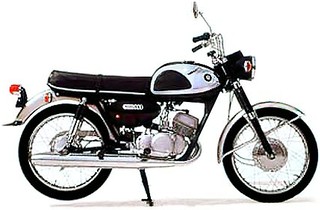 Dates from this period are a little fuzzy but I think it was not long after the Falcon Futura breathed its last that I acquired the Suzuki X-6 Hustler. A friend had bought it new then gave me a good deal on it when he went to New York to work his way to Europe as he had done once before. The working passage never quite came together and he returned after a few months and I offered to return the bike. He declined and I’m pretty sure part of the reason was pure kindness as he knew how much I was enjoying it.
Dates from this period are a little fuzzy but I think it was not long after the Falcon Futura breathed its last that I acquired the Suzuki X-6 Hustler. A friend had bought it new then gave me a good deal on it when he went to New York to work his way to Europe as he had done once before. The working passage never quite came together and he returned after a few months and I offered to return the bike. He declined and I’m pretty sure part of the reason was pure kindness as he knew how much I was enjoying it.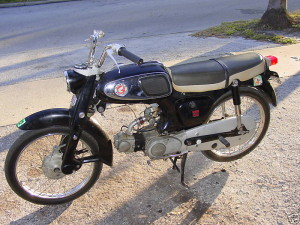
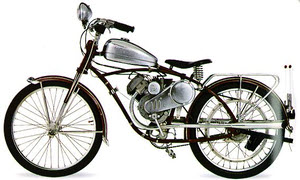 It was 1962, I was 15 years old, and I was going mobile. Fourteen and fifteen year old Ohioans can still ride two and three wheelers with “helper motors” but both vehicle and and rider require a license. Plus the motor must be under 50 CC and 1 HP and incapable of moving the rig faster than 20 MPH. Shish!
It was 1962, I was 15 years old, and I was going mobile. Fourteen and fifteen year old Ohioans can still ride two and three wheelers with “helper motors” but both vehicle and and rider require a license. Plus the motor must be under 50 CC and 1 HP and incapable of moving the rig faster than 20 MPH. Shish!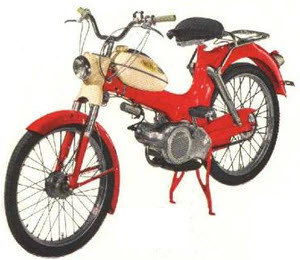 Dale’s moped had a capital ‘M’ — and a hyphen. It was a real Mo-Ped sold by Sears under the Allstate brand. They were made, apparently, by Puch in Austria. Our two mopeds did the same job but they sure had their differences. The Mo-Ped had a two-cycle 50cc motor with a two speed transmission and chain drive. Power from the Whizzer’s larger four-cycle reached the rear wheel through a belt. Belts and pullies slip; Chains and gears don’t. Compared to the Whizzer, the Mo-Ped was a jackrabbit off the line. The Whizzer would slowly lumber into motion usually helped by my feet on the ground or on the pedals. The Whizzer’s top end was well above the Mo-Ped’s so I’d usually whiz by, to show I could, before settling down for a side by side cruise. When first setting out, the Mo-Ped could be started on its stand with a little pedal pushing. The Whizzer could, in theory, be started by pedaling but it was a real chore. The method of choice was to start pushing it, release the clutch, (‘pop’ is not a word often associated with the Whizzer belt idler.), and jump on after the bike started but before it ran away.
Dale’s moped had a capital ‘M’ — and a hyphen. It was a real Mo-Ped sold by Sears under the Allstate brand. They were made, apparently, by Puch in Austria. Our two mopeds did the same job but they sure had their differences. The Mo-Ped had a two-cycle 50cc motor with a two speed transmission and chain drive. Power from the Whizzer’s larger four-cycle reached the rear wheel through a belt. Belts and pullies slip; Chains and gears don’t. Compared to the Whizzer, the Mo-Ped was a jackrabbit off the line. The Whizzer would slowly lumber into motion usually helped by my feet on the ground or on the pedals. The Whizzer’s top end was well above the Mo-Ped’s so I’d usually whiz by, to show I could, before settling down for a side by side cruise. When first setting out, the Mo-Ped could be started on its stand with a little pedal pushing. The Whizzer could, in theory, be started by pedaling but it was a real chore. The method of choice was to start pushing it, release the clutch, (‘pop’ is not a word often associated with the Whizzer belt idler.), and jump on after the bike started but before it ran away.